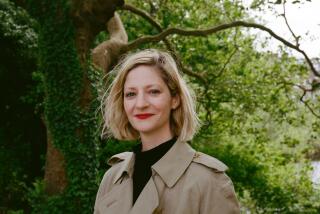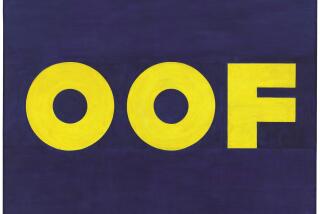Women Artists’ Lives Make for a Satisfying ‘Lunch’
Composer Igor Stravinsky plays but a minor role in “Stravinsky’s Lunch,” a study of two women painters and how they coped with the often conflicting claims of life and art. The title of Drusilla Modjeska’s book refers to the story of how Stravinsky, at work on a piece of music, ordered his wife and children to keep silent throughout lunch so he would not lose his concentration. Few women artists in the same position, Modjeska contends, have been able--or even willing--to make similar demands.
“Stravinsky’s Lunch” examines the lives and works of Stella Bowen and Grace Cossington Smith. Both were Australian, born in the same decade (Bowen in 1893, Smith in 1892). But one, Bowen, left Australia for Europe, where she mixed in modernist circles and became the muse and mistress of the famous novelist and critic Ford Madox Ford; the other, Smith, stayed in Australia, where she led the outwardly quiet life of genteel, churchgoing spinster.
Modjeska is not the first person to point out the difficulties that beset women who hope to attain the not-always-compatible goals of true love and artistic achievement. As Bowen observed in her generous, cleareyed memoir, “Drawn From Life”: “Any artist knows that after a good bout of work, one is both too tired and too excited to be of use to anyone. To be obliged to tackle other people’s problems, or merely to cook their meals, the moment one lays down pen or brush, is intolerably hard. . . . That is why a man painter or writer always manages to get some woman to look after him . . . since female devotion . . . is a glut on the market . . . A professional woman, however, seldom gets this cushioning unless she can pay for it.”
Bowen provided this “cushioning” for Ford in the decade or so she lived with him. He, in turn, helped “educate” her in modernism: Even after they had separated, Bowen remained grateful for the love they had shared and the conversations they had enjoyed. But in many ways, for Bowen, “falling out of love” was a liberating experience, enabling her to devote more of her emotional and mental energy to her art.
In the case of Smith, Modjeska admits, the dilemma embodied in “Stravinsky’s Lunch” is less germane. Although little is known about Smith’s personal life, she seems not to have had any men in it. Her parents, comfortably off, supported her artistic ambitions, and one of her younger sisters did most of the housekeeping. Her closest relationships (the precise nature of which is hard to determine conclusively from the scant available evidence) were with women.
Modjeska finds the elusive Smith in some ways even more fascinating than Bowen. For much of her life, Smith labored in relative obscurity. It cannot have been easy to receive so little acknowledgment or response. But there was a positive side to this: While many an artist may become distracted by the temptation to enhance her visibility on the cultural scene, Smith’s lack of visibility had the beneficial effect of allowing her to concentrate on her internal vision.
“Stravinsky’s Lunch” is an unabashedly personal book: informal, direct, intensely engaged. The word “I” appears on many of its pages. Modjeska leaves us in no doubt as to her own opinions. It is also a book full of thoughtful self-questioning, a kind of thinking aloud in print. Some readers may find Modjeska’s presence intrusive; most, I think, will welcome the candor and immediacy of her voice. But one indubitably admirable aspect of the book is the amount of attention Modjeska pays to both artists’ paintings. The illustrations, including two sets of color plates, are a story in themselves and keep our focus where Modjeska rightly wants it: on the work of two wonderful painters.
Yeats wrote, “The intellect of man is forced to choose / Perfection of the life, or of the work.” Having examined the cases of two women who surmounted or ignored this dichotomy, Modjeska takes issue with the assumptions involved in viewing art and life as conflicting sides of a battle: “We don’t need to give up love, or subdue life. We merely need to open the door to something, or some capacity in ourselves, that is already there . . .”
More to Read
The biggest entertainment stories
Get our big stories about Hollywood, film, television, music, arts, culture and more right in your inbox as soon as they publish.
You may occasionally receive promotional content from the Los Angeles Times.










